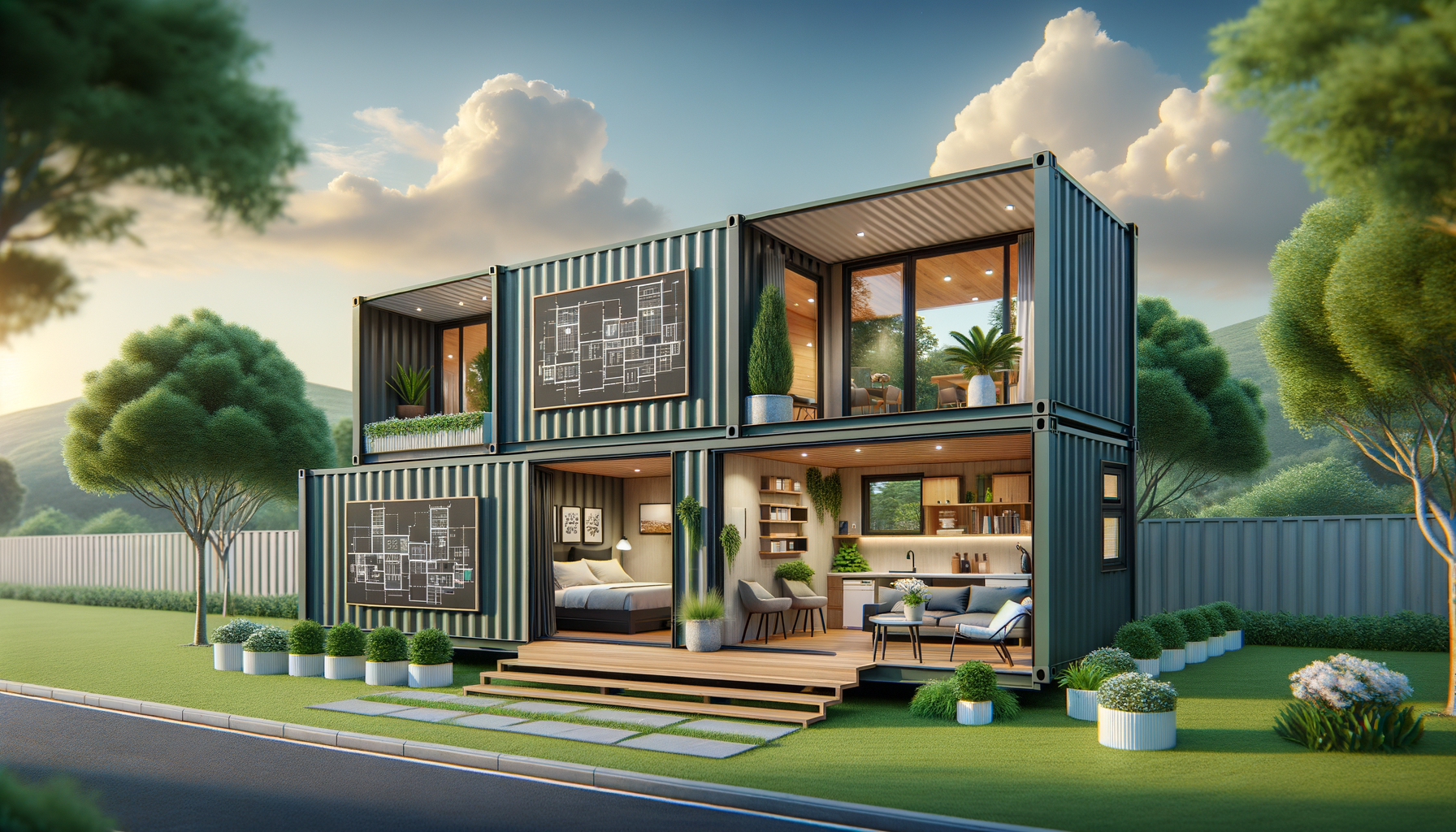Exploring the World of Tiny and Container Homes: Innovative Living Solutions
Discover the innovative and sustainable world of tiny and container homes, offering creative solutions for modern living.

Tiny Home Build: A Sustainable Living Solution
Tiny homes have become a significant trend in sustainable living, offering a minimalist lifestyle with reduced environmental impact. These small yet functional spaces are designed to maximize efficiency and minimize waste, making them an attractive option for environmentally-conscious individuals. The process of building a tiny home involves careful planning and design to ensure every square inch is utilized effectively. Many opt for off-grid solutions, incorporating solar panels and rainwater collection systems to enhance sustainability.
One of the key benefits of tiny homes is their affordability. With the rising costs of traditional housing, tiny homes provide a cost-effective alternative. They require fewer materials and less land, significantly reducing the overall expense. Additionally, the maintenance and utility costs are considerably lower, allowing homeowners to save money in the long term. This financial freedom enables individuals to focus on experiences and personal growth rather than being burdened by mortgage debt.
The flexibility of tiny homes is another appealing factor. They can be built on wheels, offering mobility and the opportunity to travel without leaving home behind. For those who prefer a stationary lifestyle, tiny homes can be placed on a permanent foundation. This adaptability allows homeowners to customize their living situation to fit their needs, whether it’s a solo retreat, a family home, or a vacation getaway.
3-Bed Container House Plans: Space and Innovation
Container homes have surged in popularity as an innovative solution for modern housing needs. Constructed from repurposed shipping containers, these homes offer a unique blend of industrial aesthetics and sustainable living. A 3-bed container house plan is particularly intriguing, as it combines spaciousness with the compact nature of container living. These plans often utilize multiple containers to create a cohesive and functional living space.
The design of a 3-bed container home requires strategic planning to ensure comfort and practicality. Architects and designers often employ creative techniques to maximize space, such as open-plan layouts and multi-functional furniture. The use of natural light is also a crucial element, with large windows and glass doors enhancing the feeling of space and connection to the outdoors.
One of the significant advantages of container homes is their durability. Made from steel, shipping containers are built to withstand harsh conditions, making them a robust choice for housing. This durability, combined with their modular nature, allows for easy expansion and customization. Homeowners can add additional containers to their existing structure, adapting their home to changing needs over time.
Container Home Designs: Creative and Sustainable
Container home designs offer a plethora of creative possibilities, transforming industrial materials into stylish and sustainable living spaces. These designs range from minimalist single-container dwellings to expansive multi-container complexes. The versatility of shipping containers allows architects to experiment with various layouts and styles, resulting in homes that are both functional and aesthetically pleasing.
Sustainability is at the core of container home design. By repurposing shipping containers, these homes reduce the demand for new building materials, minimizing the environmental impact. Additionally, many container homes incorporate eco-friendly features such as green roofs, solar panels, and energy-efficient systems. These elements not only reduce the carbon footprint but also lower utility costs for homeowners.
Another appealing aspect of container home designs is their affordability and speed of construction. Building with containers is often quicker and more cost-effective than traditional construction methods. The prefabricated nature of containers allows for rapid assembly, reducing labor costs and construction time. This efficiency makes container homes an attractive option for those seeking a quick and budget-friendly housing solution.
Comparing Tiny Homes and Container Homes
While both tiny homes and container homes offer innovative solutions for modern living, they cater to different preferences and needs. Tiny homes focus on minimalism and efficiency, often appealing to those seeking a simple and sustainable lifestyle. In contrast, container homes offer a more industrial aesthetic and are favored by individuals looking for a unique and customizable living space.
One of the primary differences between the two is their construction. Tiny homes are typically built from scratch, allowing for complete customization in design and materials. Container homes, on the other hand, repurpose existing structures, providing a modular and durable housing option. This distinction affects the overall cost and construction time, with container homes often being more affordable and quicker to build.
Another key difference is mobility. Many tiny homes are built on wheels, offering the flexibility to relocate as desired. Container homes, while modular, are generally stationary, requiring a permanent foundation. This aspect influences the lifestyle choice of potential homeowners, with tiny homes appealing to those seeking adventure and mobility, and container homes attracting those looking for a stable and unique dwelling.
Conclusion: Embracing Innovative Housing Solutions
In conclusion, both tiny homes and container homes present viable alternatives to traditional housing, each with its unique benefits and challenges. As the world continues to face housing shortages and environmental concerns, these innovative solutions offer a way forward. Tiny homes provide a minimalist and mobile lifestyle, while container homes offer durability and creative design possibilities. Ultimately, the choice between the two depends on individual preferences and needs, but both represent a step towards more sustainable and adaptable living.
As more people embrace these alternative housing options, the market for tiny and container homes is likely to grow. This expansion will lead to further innovations in design and construction, making these homes even more accessible and appealing. Whether you’re drawn to the simplicity of a tiny home or the industrial charm of a container home, these options provide an exciting opportunity to rethink what home can be.